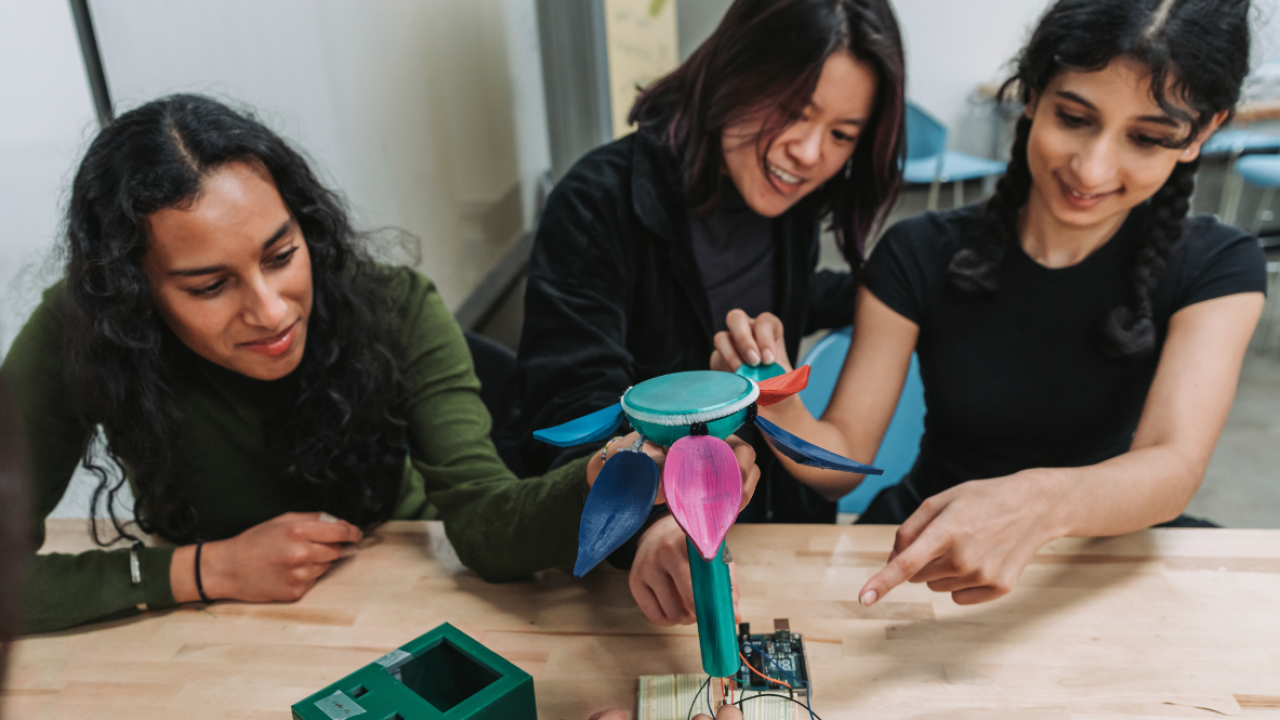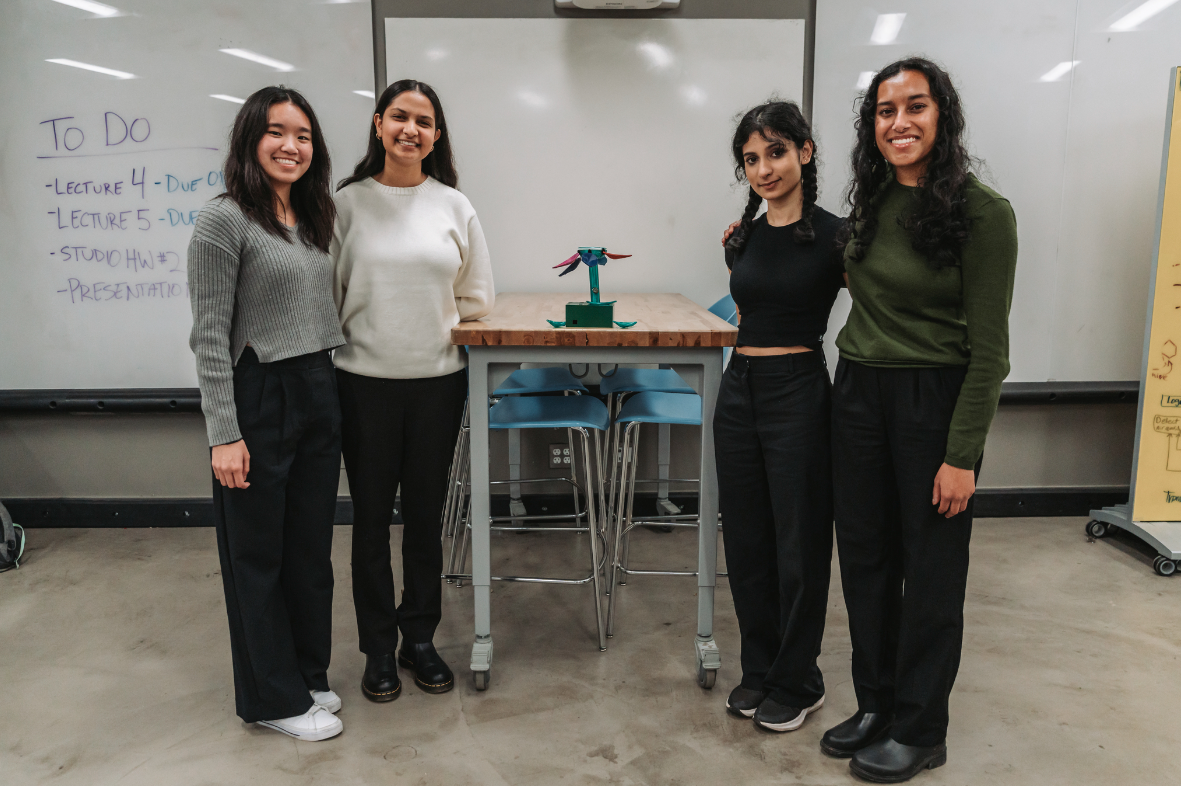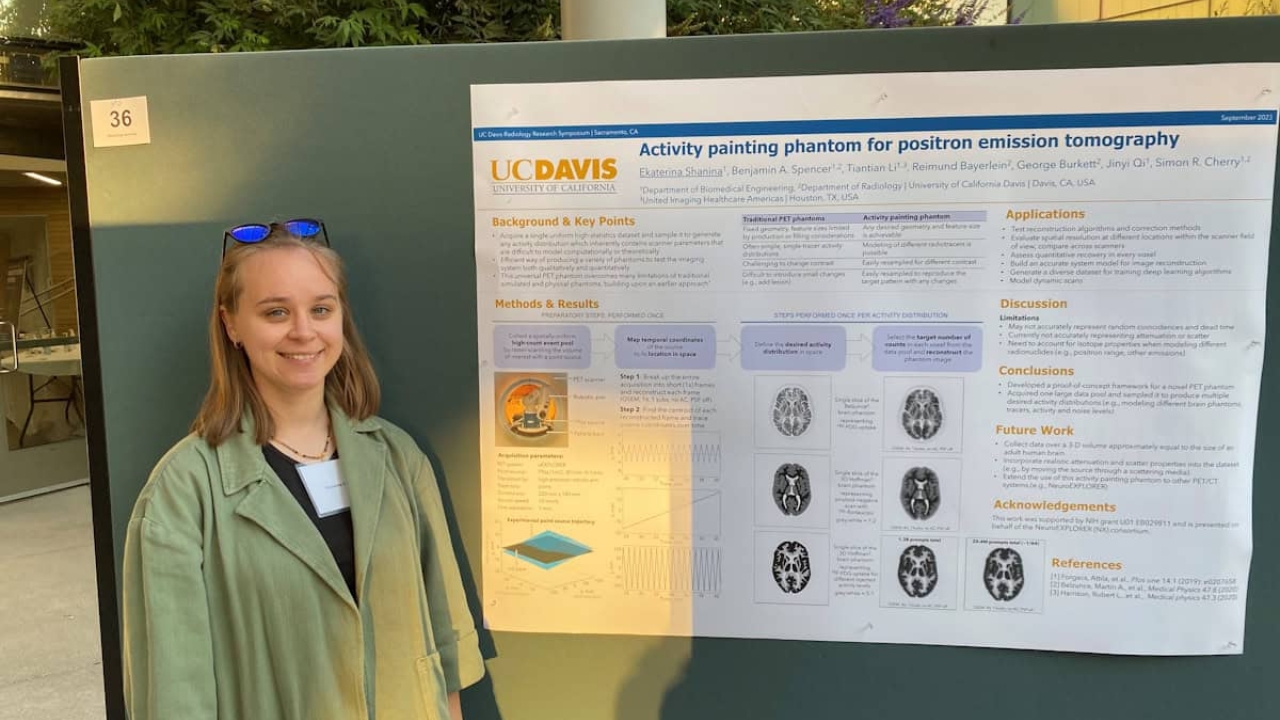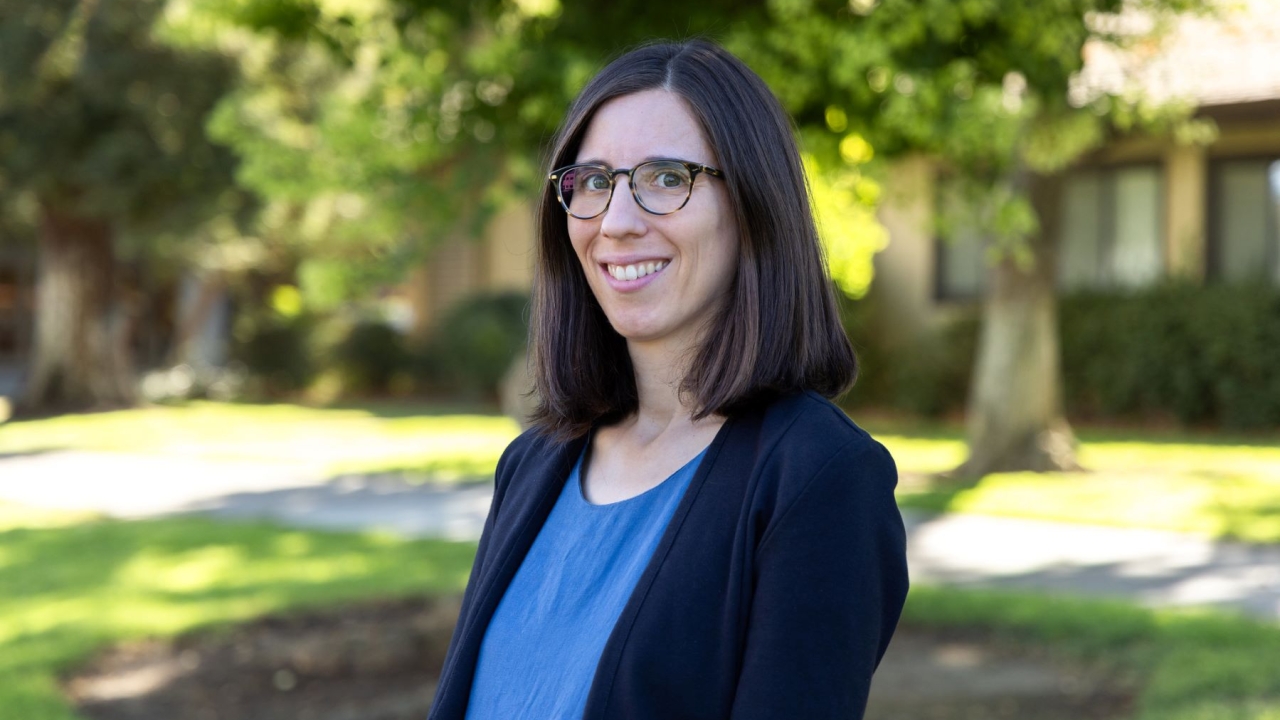
Protecting Children, Saving Salmon and Cooling Cows in Introduction to Engineering Design
Behind glass doors, workbenches and whiteboards line the walls of room 1065 at Kemper Hall at the University of California, Davis. Clusters of students crowd around each station, heads down, focused on getting their prototype to work. Through extensive brainstorming, design, coding and assembly, students bring real solutions to life in ENG 3 — "Introduction to Engineering Design."
"ENG 3 has been one of my favorite classes that I've taken so far at Davis," said Megha Mishra, a second-year majoring in electrical engineering. "I think the satisfaction rate of that class is pretty high."
The learning in ENG 3 greatly expands outside of lectures, providing students the chance to practice hands-on learning.
"Pretty much any other classes I've taken so far — whether it's physics, or any of my major classes, or math or chemistry — is theory-based," she explained. "This is a class where we've actually gotten to apply information."
"I enjoy the fun of making an idea come to life," said Paige Dailey, a first-year majoring in mechanical engineering. "It's really rewarding."
Getting the opportunity to take part in all stages of design, not just those she was already familiar with, was an important part of the experience for Bellina Cochella, a second-year majoring in material science and engineering.
"This class really helped me instill a little bit of confidence in myself about doing different things," Cochella said. "Even if I'm not the one in charge of the code, even if I'm not the one in charge of laser cutting, it's still important to understand how to do everything."
This past fall, Mishra, Dailey and Cochella partook in the collaborative design and construction of a prototype with real-world application. Their groups were responsible for engineering solutions to an environmental issue and then presenting their findings at a culminating design showcase.

Protecting Children From Poison With Flower Petals
Mishra's group chose to address the dangers of air pollution, particularly in Delhi, India, where the mass production of bricks in factories can poison the air with carbon monoxide.
Mishra and her groupmates, Ariba Arif, Anika Chand and Paige Phung, designed a solution for children to keep themselves safe from the invisible danger. Their device took the form of a flower that, when it detected carbon monoxide, would close its colorful 3D-printed petals and signal to children that it was not safe to go outside. When the flower measured the air quality as safe, the petals would open.
They utilized two programs taught in the class: Tinkercad, to create a digital 3D model of the design and configure the wiring, and Arduino to program their device. The biggest challenge for Mishra's group arose when assembling their final prototype as they struggled to adapt their digitized plans with the physical components.
"Our code was working perfectly for our panels to move up and down as they closed," she explained about the digital model. "But in the real world, because the petals were so heavy, they weren't able to do that in the same way that we would have liked."
After troubleshooting their physical project and several rounds of edits to their code, Mishra's group presented their project, the culminating experience of the ten-week course.
Saving the Salmon
Dailey's group focused on environmental fragmentation — the process of a habitat deteriorating into smaller, disconnected patches. In particular, they narrowed in on the Shasta River, due to its recent struggles with drought impacting the Chinook salmon migration.
"Our vision was to help the salmon survive, because they are a keystone species, and without them, a lot of other animals in the food chain will suffer," Dailey said.
Dailey worked alongside group members Alexander Martell, Isaac Mathews and Hudson Sheats in designing a prototype with a sensor to detect water levels and promote effective salmon migration.
"We wanted to connect the sensors and dam releases in the Shasta River," Dailey explained. "If the water is below a certain level, we can trigger these dam releases so that there's not flooding and we're still preserving water, but we'll still be able to maintain the necessary level of water for the salmon to migrate."
Many class sessions were dedicated solely to research and brainstorming before moving on to making it all work. Once they learned how to create circuits with Arduino, they were able to construct their model — a sized-down version of the sensor system.
"Once we had all of those pieces, the night before our final presentation, we were able to put them together and test our sensors," she said, reflecting on the satisfaction of seeing the physical model come together.

The "Moo"isture Mister
Cochella's group investigated how to adapt to rising global temperatures due to industrialization. She and her groupmates, Oswaldo Franco, Ryan Ham and Artem Korol, chose to target a local problem — one that can be witnessed right at UC Davis.
"We wanted to do something that was related to UC Davis, and we thought, what better thing to do than the UC Davis cows?" Cochella said.
Cows are at risk of overheating once the temperature gets above 80 degrees Fahrenheit. The UC Davis cows are at high risk during the summer when temperatures in Davis can get well over 100 degrees Fahrenheit.
"When cows get super hot, they experience heat stress," she explained, "which is basically like loss of fertility, they're super slow, and they don't want to eat. So, sad cows."
Cochella added, "The current solution that farmers have right now is just kind of manually hosing the cows down with water, which isn't really water efficient, and we're trying to stay environmentally friendly."
As an alternative, water-efficient solution, Cochella's group designed automated sprinklers to attach to a cow's feeding pen. Constructed with a motion and temperature sensor, the sprinklers turn on when a cow is in range, and shut off when the cow leaves, or if the temperature is low enough — this way, they preserve water.
Coming Together to Design Engineering Solutions
When discussing what they would tell themselves about ENG 3 at the start of the quarter, Cochella, Dailey and Mishra emphasized communication and teamwork.
"Engineering isn't really a solo kind of job," Cochella said. "A really important part about ENG 3 is just being able to work with other people and come together to make a project a reality."
"You need to be able to work as a team," Dailey said. "Any project as an engineer — in my next four years, or in the workplace — will definitely need those skills."
Getting the group dynamic to work can take some effort, as Mishra recalled.
"The first few meetings were kind of awkward," she recounted. "We were quiet and it was hard for us to bring up if we had issues."
"But then we learned how to find a dynamic and how to split up our tasks evenly," Mishra said. "To be able to work with a group and produce a product is just a really vital, valuable skill to have, especially in engineering."
Through their combined efforts, each team was able to physically hold their creation in their hands — ideas that began as sketches on whiteboards.
With the new quarter comes another session of ENG 3 and the cycle starts over again. Students enrolled this winter quarter are now brainstorming how they can engineer solutions to prominent issues like climate change, health and agriculture.
Such large problems may be intimidating to confront, but that does not keep students from trying to make the world a safer, more sustainable place. ENG 3 is the perfect opportunity to get hands-on practice designing solutions.
"It's just a rewarding experience, no matter what your background is," Mishra said. "If you're looking for something that isn't just theory-based, it's a really great class for you."




